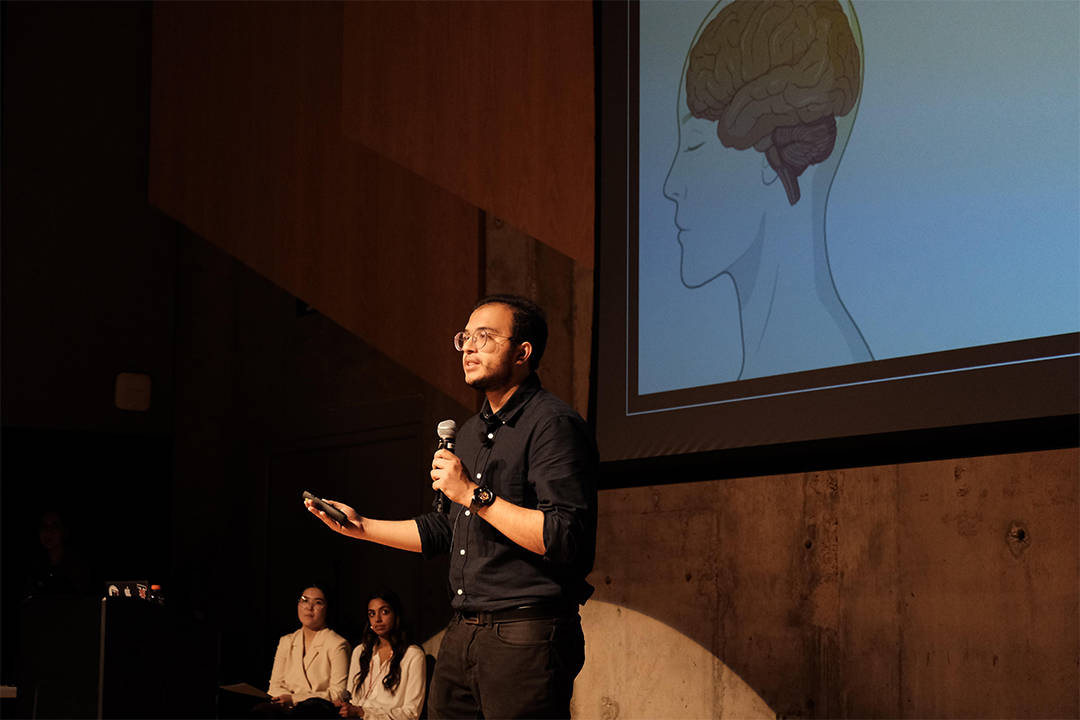We all know that magic cannot break the laws of physics. Yet, magicians conjure objects out of nothingness, teleport cards, and can easily guess which number we are thinking of — or, at least, that’s what our brain tells us. The explanation behind many magic tricks may be rooted in cognitive neuroscience, according to one U of T undergraduate student.
Sahir Dhalla is currently the neuroscience liaison at Cove Neurosciences Inc. and a student in neuroscience and philosophy at the University of Toronto. By the end of his TEDxUofT Salon talk, which took place on November 10, our minds had been completely manipulated — not by any technology or superpower, but by the power of magic.
How do magicians manipulate people’s perception of reality?
Any skilled magician knows that magic isn’t just about complex, dexterous hand movements. “If I had to summarize magic in a few words, it would be manipulating expectations,” wrote Dhalla in an email to The Varsity. Our minds cannot handle all the information they process but rather hold onto a few observable facts and fill the rest with expectations, or predictions. With their words, movements, and posture, magicians can influence these predictions.
Dhalla is also a magician. At one point during the talk, he called a member of the audience onstage and asked someone in the first row to hold an envelope. The volunteer chose a card from a deck randomly. We all saw the card: the king of diamonds. With the card back inside the deck, Dhalla took a magic wand out of his pocket, and, with a gentle touch, the card disappeared from its deck. The envelope was then opened to reveal the king of diamonds.
According to Dhalla, our brains are completely gullible and can be easily manipulated. His magic trick was an elaborate manipulation of our perception of reality. How did he do it?
How brains become misdirected
Among all sensory inputs our brain processes, vision is dominant, but it is also limited. In 2008, a group of researchers from Durham University tracked people’s eye movements while they watched a magic trick. Through his gaze and subtle moments, the magician influenced which sections of the trick received the most visual attention from his audience. Simultaneously, he was performing the real manoeuvre in plain sight, in an area of low attention.
Dhalla is aware of this technique. He explained that magicians use ‘spotlight’ cues to direct your attention. At the same time, the more details of the trick that you see, the less likely you are to discover what really happened. Was the wand perhaps a misdirection, keeping our attention far from something else?
Dhalla tells us that pulling out the magic wand created a frame of attention. As a result, everything beforehand became fuzzy memories in our minds. Magicians usually overload our memory with pointless steps so that we cannot trace back sequences of events.
The illusion of free will
Magicians often use a strategy called “forcing,” in which they use subliminal messages to influence our choices. Magicians often explain their actions out loud, but they can also use this as just another way to make us fall into their narrative, even subconsciously. All of these messages affect our minds without us knowing. Dhalla demonstrated this strategy with another trick.
He said, though this trick is usually done in groups of three to seven people, he was confident it would work on us too. He asked us to think of a two-digit number that followed a set of rules. There were 8 possible numbers that fit all the rules — and yet many people chose 37. Dhalla had subliminally forced this number on us by making sure we were thinking of its digits.
Similarly, many card tricks leave one card exposed for a longer time — unnoticeable to the audience, but holding our attention. Did Dhalla perhaps manipulate the volunteer into choosing the king of diamonds?
The combined strength of magic and science
Prediction errors, where our expectations don’t align with reality, are why magic works — and they tell us a lot about our brains too. Dhalla explained that when someone’s arm is paralyzed, if the area of their brain that controls its movement is unaffected, they may still believe that they are moving their arm. Cognitive neuroscientists have used magic tricks to study short-term memory and the role of different brain areas in prediction errors.
Dhalla had misdirected our senses and our memory, manipulated our thoughts and choices, and forced our brains into a narrative in which he could teleport cards.
But magic is more than awe and games. These same techniques are used in everyday life, from helping form good habits to scamming people. After tricking us, Dhalla asked the audience: “Do you think you could stop someone from doing the same to you?” Perhaps a neuroscientist would give you the answer, but a magician never reveals their secrets.
Disclosure: Sahir Dhalla served as The Varsity’s Science Editor for Volume 143.


